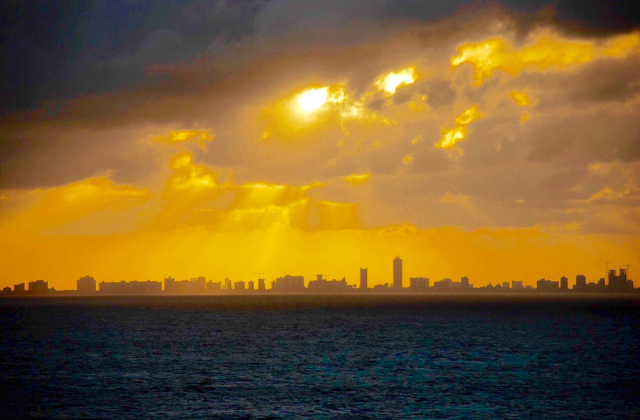As a historical heatwave continues to sweep across the western United States, one Miami resident is on a mission to spread the word that not all heat is created equal.
Jane Gilbert, the world’s first chief heat officer in Miami Dade County, told TIME that, as temperatures soar, low-income communities face potentially life-threatening challenges that simply don’t exist in higher-earning neighborhoods. “I live in a place of privilege and it’s a beautiful area,” she told the news outlet of her Morningside neighborhood, an upscale, coastal suburb. “But you don’t have to go far to see the disparity.”
Reports TIME:
A mile or two inland, in lower income, mostly Black and Latino neighborhoods like Little Haiti, Little Havana and Liberty City, tree cover can be as little as 10%, compared to around 40% in upscale coastal areas, according to Gilbert. Residents wait for buses on unshaded benches. Many can’t afford to buy or run an AC unit.
Miami community organizer Stibalys Gomez explained to TIME that lives are on the line in his struggling, predominantly Latinx community. “You can’t be outside for more than five minutes without feeling faint because there’s no shade. Then inside a lot of homes, the buildings haven’t been fixed up in a very long time, so you get holes in the wall and mold,” he said. “We have a lot of older people here, older Hispanics with respiratory problems, including my grandmother. I’m really worried about them this summer.”
According to TIME:
Extreme heat contributed to the deaths of around 12,000 people in the U.S. each year between 2010 and 2020, according to a study by the University of Washington—more than any other extreme weather event. By 2100, the annual toll could be as high as 97,000.
A May study published in Nature concludes that communities of color across the U.S. are nearly “twice as exposed as white people” to something called the “urban heat island effect,” which is where paved streets and structures absorb more heat than grass and trees. That then drives the temperature up. “People living below the poverty line are 50 percent more exposed to the heat island effect than wealthier people,” TIME reports.
Gilbert’s job is to tackle these disparities in her community. According to TIME she will work with Miami Mayor Daniella Levine Cava to “plant new trees, create better infrastructure for heat emergencies, and inform people about their needs and rights during the heat.”
“During the pandemic we’ve seen that our most vulnerable are the most at risk from COVID—elderly people, outdoor workers, minority populations, low income areas,” Gilbert told TIME. “And it’s the same with heat: they’re the ones that we need to double down on protecting.”
